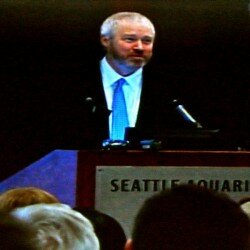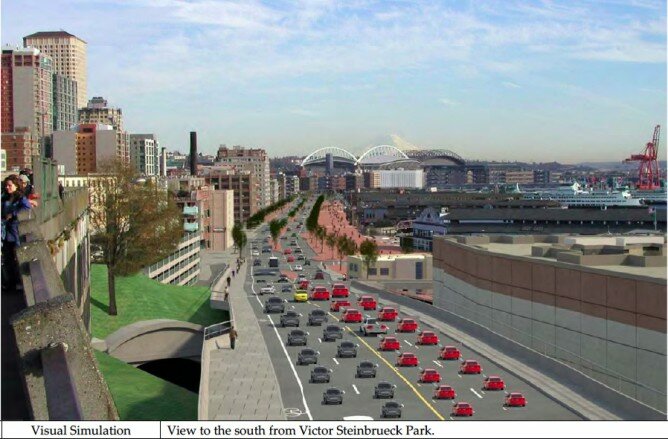Local Environmental Groups Can’t Find Environmental Angle on Transportation Megaproject
The Seattle Times has a story on Mayor McGinn’s opposition to the tunnel that, refreshingly, casts him as a Machiavellian power-broker able to sway the national levels of environmental organizations: “Sierra Club digs into tunnel fight; too cozy with McGinn?”
This provides balance to their view that he’s completely incompetent.
But much more interesting than that is the conclusion of the article, which contains a roundup of the environmental groups that either support the tunnel or haven’t taken a position.
Not all environmental groups in the region share the Sierra Club’s view that the tunnel is the worst environmental option to replace the viaduct.
Several point out that tearing down the viaduct allows the city to create an appealing green space along the waterfront, reduces surface-water runoff into Puget Sound, eliminates a huge source of noise pollution, and combats sprawl by making the city a more desirable place to live.
I would suggest that if you support any of the following organizations for actual environmental reasons, you might want to rethink that support, or at least ask them to rethink their responses to the media: Washington Forest Law Center, Washington Conservation Voters, People for Puget Sound, and Washington Environmental Council.
The Times quotes Clifford Traisman, lobbyist for Washington Conservation Voters and Washington Environmental Council, saying, “It’s not a black-and-white environmental issue.” (According to WSDOT’s SDEIS, only the I-5/Surface/Transit option helps lower greenhouse gas emissions, which in principle is a top priority of the state.)
For a rebuttal to that position, visit the policy wonks at Sightline for their extensive analysis of what the tunnel’s impacts are. This vociferousness isn’t like them, by the way–it’s just that they can’t find a worthwhile benefit the tunnel provides for the cost. It could hardly be less black-and-white, unless you’re of the opinion that single-occupancy vehicles are greener than transit.
Note the benefits, above, which are not at all exclusive to the tunnel, though they are presented that way. Certainly a waterfront green space and reducing surface street run-off are not. (I want to take issue with “eliminates” a huge source of noise pollution, as the tunnel would exhaust both car exhaust and tunnel noise into the city above.) The notion that the tunnel “combats sprawl” (what an active verb!) is new to me, and I note that there are no data points associated with this startling claim.
In short, it’s simply intellectually indefensible to suggest that the tunnel is a green option, or that it is “as green as” an option that seeks to shift capacity concerns from vehicles to people. I expect tunnel proponents to elide the difference, but theoretically environmental organizations would know better.
Speaking of intellectually indefensible, the Seattle Chamber’s Tayloe Washburn has penned an op-ed in which he asks readers to use their imaginations when planning traffic flow for transportation projects: “Now close your eyes for a moment and picture your commute on a rainy Friday evening if the mayor got his way and 110,000 additional cars and trucks were forced onto I-5 and city streets.”
Washburn hasn’t gotten his statistics right: it’s 110,000 vehicle trips, not different cars and trucks, unless he’s imagining–and it occurs to me this is where the problem might be–commuters driving off from home each day and never returning. But I think we can agree that, in general, we don’t want to leave transportation planning to a large group of people standing around with their eyes closed.



 Daily Email Digest of The SunBreak
Daily Email Digest of The SunBreak